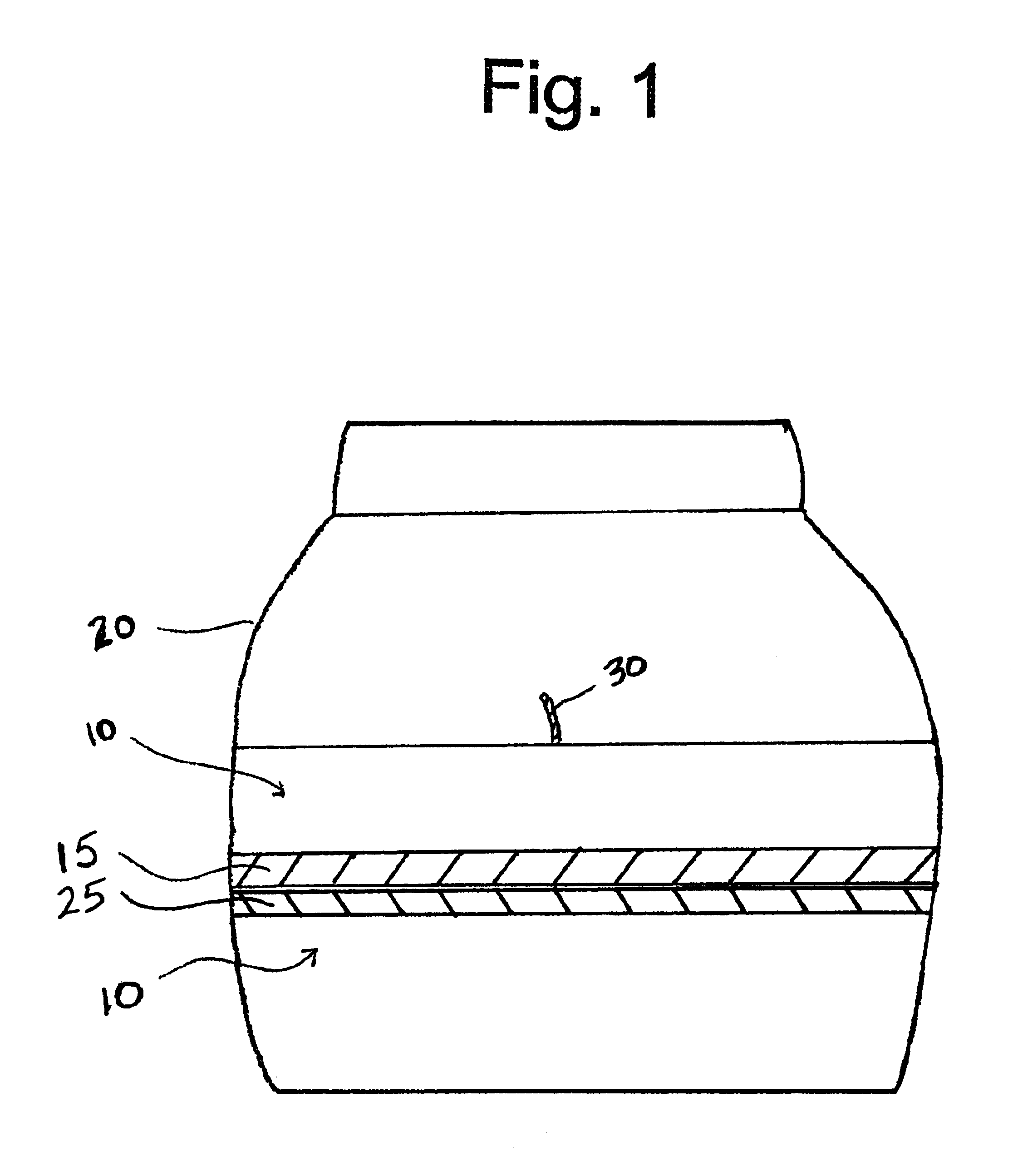Vegetable oil candle
a vegetable oil and candle technology, applied in the field of vegetable oil candles, can solve the problems of insufficient oleic and palmitic acid with an iodine value of about 53, insufficient oleic and palmitic acid oil, and inability to induce preferential burning consistently,
- Summary
- Abstract
- Description
- Claims
- Application Information
AI Technical Summary
Benefits of technology
Problems solved by technology
Method used
Image
Examples
example 2
A 100 g formula of the candle composition 10 of Example 1 may be made in the following manner. The 32.5% wt. LMP (1230 grade) paraffin wax and 10% wt. HMP (1245 grade) paraffin wax are measured out into a beaker with the 1% wt. Vybar 103 and heated to 75.degree. C. The mixture is to be stirred, either with a stir bar or an overhead mixer. Then, 50.5% of the HVO must be added until the mixture is clear indicating homogeneity. Maintaining the heat at 75.degree. C., the dye, antioxidant, and UV inhibitor must then be added and mixed until the composition is again homogenous. Finally, the fragrance oil is to be added and mixed for at least 20 minutes and homogeneity.
example 3
A candle inside a transparent jar 20, having a candle composition 10 and a wick 30 may be made in the following manner. A wick must be waxed and strung through the wick clip. Then the wick clip must be crimped. The crimp should be as close to the top of the clip as possible, with no extra wick protruding from the bottom of the clip. Using 3M High Melt adhesive 3769 Softening Point 240 glue, the wick must be affixed to the center of the jar 20. The glue should completely obstruct the bottom opening of the wick clip. The wick must remain centered. Once the entire candle composition 10 has been mixed to homogeneity as described in Example 2, the jar 20 is heated and the formula is poured into the jar.
example 4
Using samples according to the candle composition 10, contained in a 7.5 ounce glass container using a CD-N 10 wick, the invention can be demonstrated in the following manner.
Several samples were burned to completion, and evaluated for the appearance of crystallization rings and darker color layers after 10 and 20 hours of burn time. The samples provided had varying ranges of the HVO, paraffin waxes, and Vybar 103. However, all provided samples contained the same amount of additives such as fragrance oil and dye formula.
The crystallization and darker color patterns occurred among the samples having only HVO and no paraffin wax. However, the crystallization and darker color patterns were not inhibited by the addition of paraffin wax to the HVO formulation. These patterns were also noted in samples having blended LMP and HMP paraffin wax without HVO, although the crystals were smaller and more randomly scattered. However, when each paraffin wax component was tested separately without ...
PUM
| Property | Measurement | Unit |
|---|---|---|
| melting point | aaaaa | aaaaa |
| melting point | aaaaa | aaaaa |
| melting point | aaaaa | aaaaa |
Abstract
Description
Claims
Application Information
 Login to View More
Login to View More - R&D
- Intellectual Property
- Life Sciences
- Materials
- Tech Scout
- Unparalleled Data Quality
- Higher Quality Content
- 60% Fewer Hallucinations
Browse by: Latest US Patents, China's latest patents, Technical Efficacy Thesaurus, Application Domain, Technology Topic, Popular Technical Reports.
© 2025 PatSnap. All rights reserved.Legal|Privacy policy|Modern Slavery Act Transparency Statement|Sitemap|About US| Contact US: help@patsnap.com


